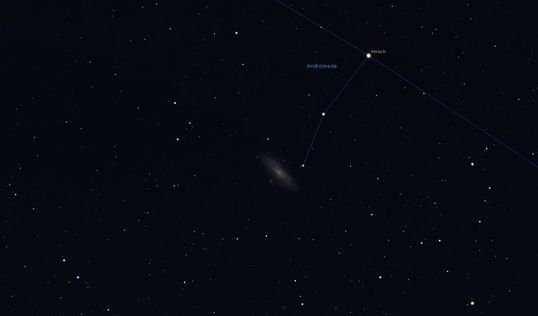Our galaxy is headed towards a collision with Andromeda. The finest time of year to see it with the naked eye has just begun.
The Milky Way, our galaxy, and Andromeda, its larger cousin, are travelling in an interesting direction. Due to gravitational pressure, both are moving toward one another at a pace of 113 kilometers per second, and although though their predicted collision won't happen for 4.5 billion years, their outer layers have already started to converge.
Meanwhile, Andromeda, commonly known as Messier 31, is easiest to see with the unaided eye from Earth.
From mid-August to November, the spiral galaxy become visible in the night sky of both hemispheres of our planet. Despite being located 2.5 million light-years away, Andromeda take over a quarter of a degree in the sky. This is equivalent to half the width of a full moon, according to NASA.
When will we be able to see the Andromeda galaxy?
Due to its remoteness, Andromeda has a disperse glow. Therefore, to spot it with the naked eye, it is not enough to have a clear sky, but also that there is an absence of lunar brightness and small amount of light on the surface.
For this reason, although the galaxy already become visible in the sky on these dates, it is best to observe it on nights close to the new moon phase. In August, this stage will come in the last week of the month (from August 24 to 31).
Where in the sky is Andromeda located?
The galaxy appears above the horizon, heading towards northeast, around midnight in Peru and other countries in the southern hemisphere (Argentina, Chile, etc.), and hours earlier in the northern hemisphere (Mexico, Spain, etc.).
It is discovered next to the Andromeda constellation —hence its name—, just at the height of the character's 'belt'. Meanwhile, the Pegasus constellation, identified by having a quadrilateral formed by its stars, can serve as a guide to locate the galaxy.
The finest time to see Andromeda is between 2:00 am and 3:00 am, when it is located in the north, at a higher point in the sky.
To the naked eye it will look like a small cloud with some detail, but if you use binoculars, you can clearly glimpse the majesty of this neighboring galaxy.
Andromeda is more visible than most visible stars (magnitudes 4 to 6), but less obvious than naked-eye planets, with an apparent magnitude of 3.5 (the lower the number, the brighter it is). (Magnitudes between one and zero)
For this reason, astronomical observation experts suggest that anyone who decides to venture in search of Andromeda or any other deep space object should first try to adapt their eyes to the darkness of the sky.


.jpeg)




